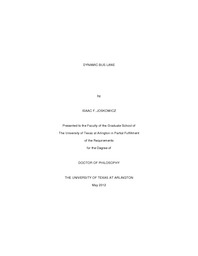
ATTENTION: The works hosted here are being migrated to a new repository that will consolidate resources, improve discoverability, and better show UTA's research impact on the global community. We will update authors as the migration progresses. Please see MavMatrix for more information.
Show simple item record
| dc.contributor.author | Joskowicz, Isaac F. | en_US |
| dc.date.accessioned | 2012-07-25T19:08:43Z | |
| dc.date.available | 2012-07-25T19:08:43Z | |
| dc.date.issued | 2012-07-25 | |
| dc.date.submitted | January 2012 | en_US |
| dc.identifier.other | DISS-11630 | en_US |
| dc.identifier.uri | http://hdl.handle.net/10106/11055 | |
| dc.description.abstract | This dissertation documents the research conducted to investigate the feasibility of implementing a "Dynamic Bus Lane" (DBL) system on Westheimer Road in Houston, Texas, and to determine the particular conditions when the system could be applied to other arterial streets. The DBL system is a bus preferential system which would turn a normal traffic lane into a bus lane when a bus is approaching a bus stop at a major intersection. The bus would activate a dynamic message sign that would change the lane use from a normal traffic lane to a bus lane for the time when the bus is present, and then it would change the lane use back to general traffic use when the bus leaves. The main idea behind this system is to use a large dynamic message sign before the intersection, which will convey a clear and compelling message of the system operation to the general public.Two simple linear regression models were constructed using the bus queue travel time before it reached the bus stop as the response variable, and the vehicle queue in front of the bus as the predictor variable. One model was developed for the morning peak hour, and another model was developed for the afternoon peak hour. These models predicted that the bus travel time would be reduced by 2.7% and 5.6% during the morning and afternoon peak hours, respectively. These results are much lower than those reported elsewhere for similar systems.The Highway Capacity Manual (HCM) methodology was used to assess the impact of the DBL system on other vehicles. Generally, the impact was that the DBL would cause the intersection level of service to drop one level. However, the total system impact on other vehicles was much greater than the DBL benefits in terms of person-hour delay. The total system impacts are larger than the benefits by factors of 50 and 90 in the morning and afternoon peak hours, respectively. The HCM model showed that the impact on the delay of the other vehicles on other streets with less number of lanes was that the intersection level of service also dropped by one level. A sensitivity analysis of the intersection saturation levels versus the DBL benefits and impacts showed that the DBL system would perform ideally at or below the 90% saturation level. Also, it was found that because of the high level of traffic saturation on Westheimer, it would be very difficult for vehicles to change lanes when the DBL system is activated. The spacing between major intersections should be at least 9/10th of a mile to allow for lane-change maneuvers. The DBL system improved the transit levels of service for the test section by one level for both peak hours.The marginal adverse impacts of the DBL system on other vehicles outweighed the benefits for this test section of Westheimer. The person-hour delay impacts were greater than the benefits by an order of magnitude. The most significant factor attributable to the high level of impacts on vehicle and person delay impact was the high level of traffic saturation on this section of Westheimer. Even though the transit level of service would be improved, it was found that it would not be advisable to implement the DBL system on Westheimer. It was found that it would be advisable to implement it on other arterial streets with lower saturation levels, such as Bellaire Blvd and Gessner Road in Houston, Texas. A step-by-step procedure is recommended to determine whether the DBL system is feasible to implement on other arterial streets. | en_US |
| dc.description.sponsorship | Williams, James C. | en_US |
| dc.language.iso | en | en_US |
| dc.publisher | Civil & Environmental Engineering | en_US |
| dc.title | Dynamic Bus Lane | en_US |
| dc.type | Ph.D. | en_US |
| dc.contributor.committeeChair | Williams, James C. | en_US |
| dc.degree.department | Civil & Environmental Engineering | en_US |
| dc.degree.discipline | Civil & Environmental Engineering | en_US |
| dc.degree.grantor | University of Texas at Arlington | en_US |
| dc.degree.level | doctoral | en_US |
| dc.degree.name | Ph.D. | en_US |
Files in this item
- Name:
- Joskowicz_uta_2502D_11630.pdf
- Size:
- 2.636Mb
- Format:
- PDF
This item appears in the following Collection(s)
Show simple item record


